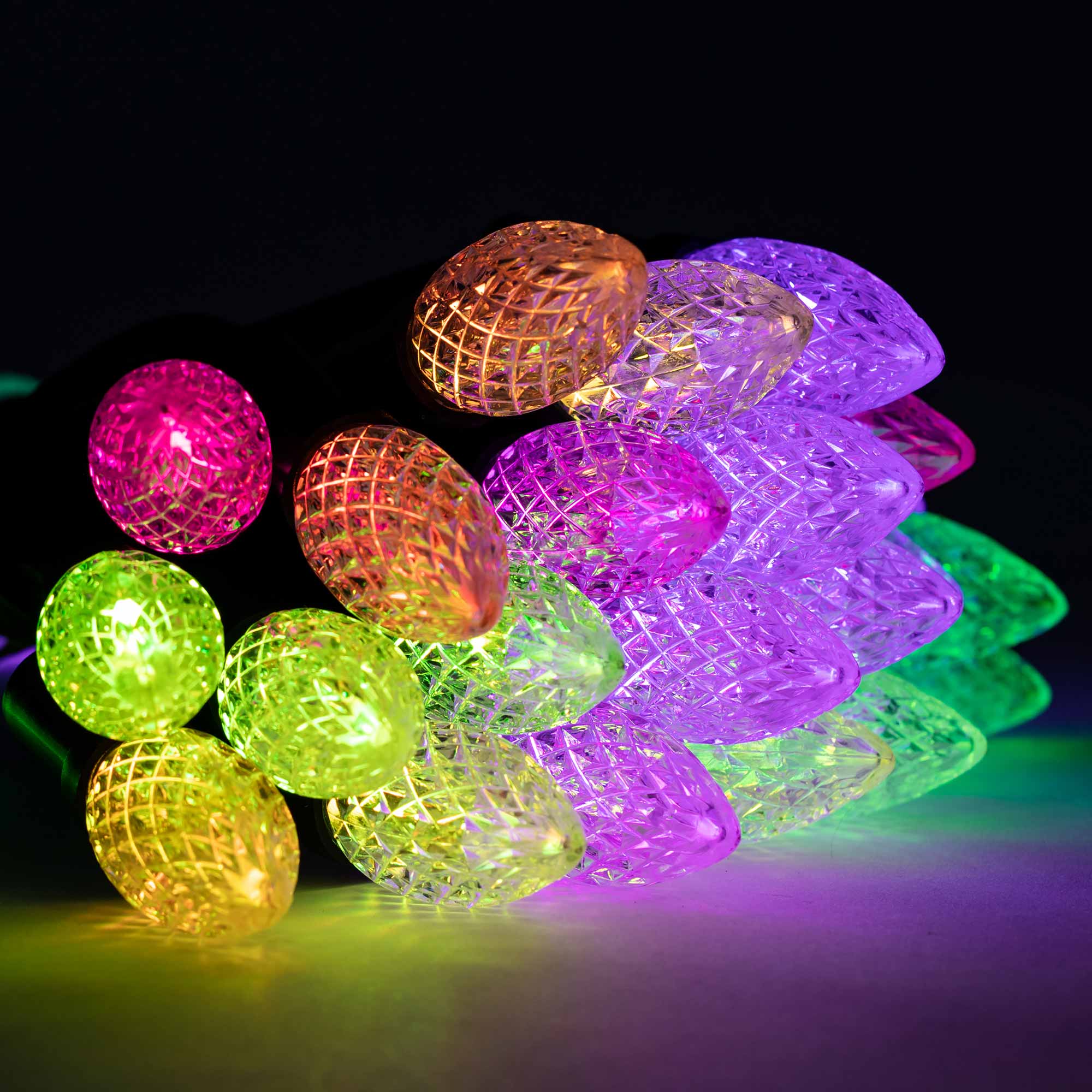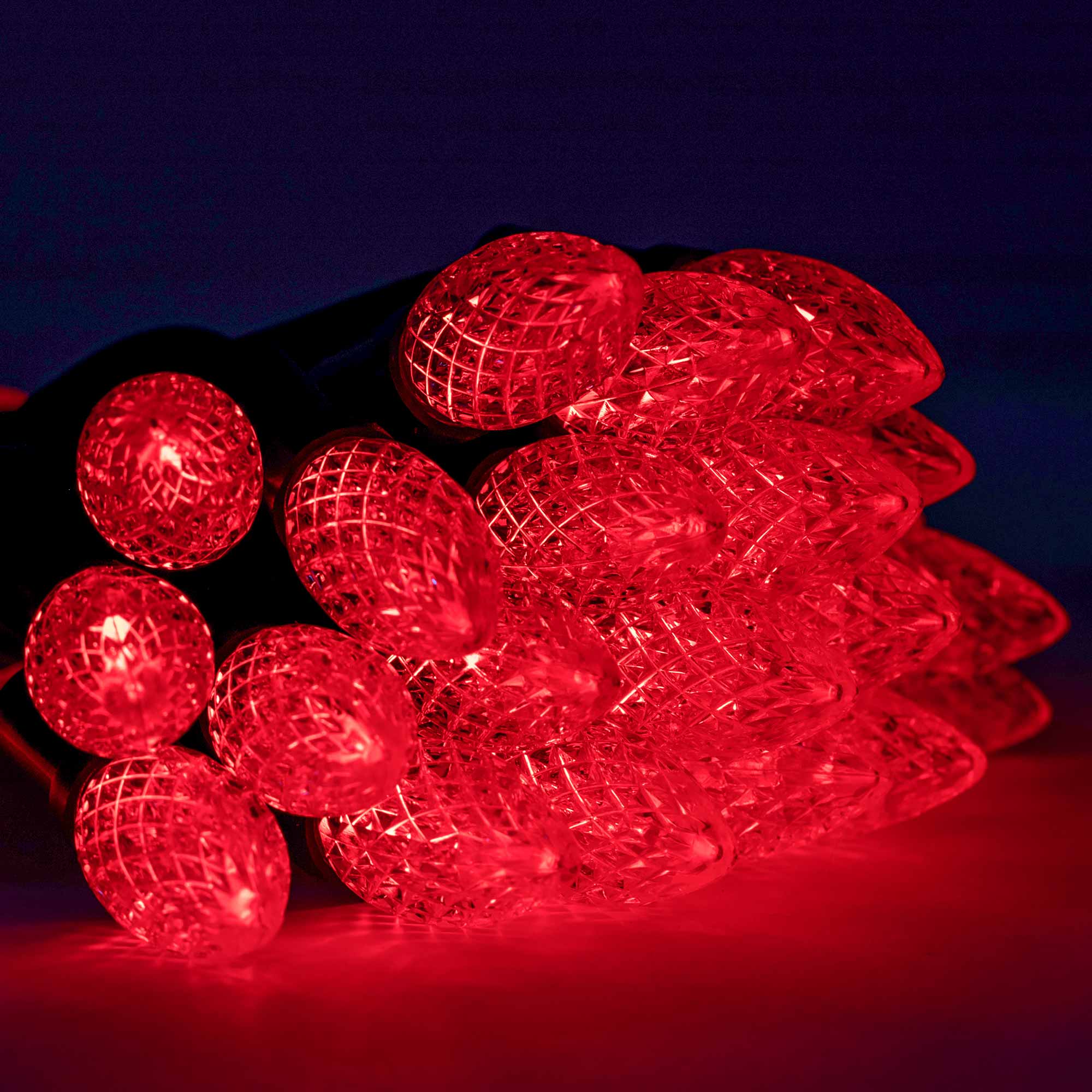Illumination has remained a fundamental aspect of the human journey throughout history. In our contemporary era, the realm of indoor lighting is primarily dominated by two cutting-edge options: RGB lights and LED lights.
This article undertakes the difference between Rgb And Led Lights, encompassing key aspects such as:
- Color Temperature: Delving into the nuanced realm of color temperature, where RGB and LED lights diverge in their ability to offer distinct atmospheres through varying shades of light.
- Color Rendering Index (CRI): An exploration of the pivotal role that CRI plays in accurately representing colors, shedding light on the disparities between RGB and LED lighting in rendering hues faithfully.
- Power Consumption: A meticulous assessment of power consumption patterns, unveiling the varying efficiencies of RGB and LED lights in their utilization of energy resources.
- Cost Analysis: A judicious financial comparison between the two contenders, delving beyond the initial investment to unveil the long-term cost implications of employing RGB and LED lights.
- Environmental Footprint: Scrutinizing the ecological impact of these lighting options, elucidating their differential contributions to sustainability and resource conservation.
Through the discerning evaluation of these factors, this discourse aims to foster a profound comprehension of the dichotomy between RGB and LED lighting solutions, specifically focusing on The Difference Between RGB And LED Lights. By doing so, it empowers stakeholders to make informed decisions, tailored to the precise requisites of each distinct application scenario.

Discover the Best Distinctive Advantages of RGB and LED Lighting
In the world of illuminating possibilities, two exceptional lighting technologies stand out: RGB and LED lighting. Each holds its own unique brilliance, shaping the ambiance around us. Delve into the nuances of these technologies, specifically focusing on The Difference Between RGB And LED Lights, and uncover how they can elegantly transform spaces.
Radiant Spectrum Creation
RGB lighting, a symphony of red, green, and blue lights, orchestrates an exquisite array of colors. This symmetrical dance brings to life an artistic palette, painting environments with captivating hues. Contrastingly, LED lighting elegantly radiates a solitary, energy-efficient hue. Its focused luminosity enchants without compromise.
Sustainability Illuminated
When contemplating the environmental impact, LED lighting emerges as the virtuous champion. With an extended lifespan and an inherent eco-consciousness, it triumphs over RGB lighting in sustainability. Its harmonious efficiency gently treads upon our planet, ensuring a brighter future for generations to come.
Enduring Brilliance
While the upfront investment in LED lighting may be greater, its lasting endurance eclipses the initial cost. Durability becomes its loyal companion, eradicating the need for frequent bulb replacements. This steadfast nature not only saves resources but also guarantees a luminous presence that stands the test of time.
Harmonizing Choices
The decision to embrace either RGB or LED lighting resides in the realm of desired illumination effects and energy conservation imperatives. Whether you seek to create a kaleidoscope of moods or to embrace the efficiency of a single, resplendent hue, your choice becomes an artistic declaration—a testament to your vision.
Enlightened Conclusions
In the radiant panorama of lighting technologies, RGB and LED lighting shine as beacons of innovation, with The Difference Between RGB And LED Lights setting them apart. RGB's harmonious interplay of colors dances in synchrony, while LED's efficient glow echoes sustainability. As you embark on your journey of aesthetic enhancement and environmental mindfulness, remember that your choice reverberates not just through spaces, but through time itself.
Exploring Illumination Varieties
The realm of lighting encompasses a diverse landscape, with two prominent classifications: RGB lighting and LED lighting.
RGB Illumination: In the symphony of light, RGB lighting orchestrates a harmonious trio of colors—red, green, and blue. This triad dances in unison to paint a canvas of myriad shades, enriching spaces with captivating vibrancy.
LED Radiance: Enter the arena of efficiency and brilliance with LED lighting—Light Emitting Diode. A paragon of energy-consciousness, LED lighting emits a singular, intense hue that outshines conventional RGB alternatives. Its longevity is a testament to its unwavering luminescence.
Chromatic Temperature Divergence: Beyond their foundational distinctions, there exists an additional facet to lighting—color temperature.
Embarking on the Illuminating Journey
These luminous dimensions—RGB and LED lighting, with The Difference Between RGB And LED Lights as a crucial distinction—unveil the heart of modern lighting innovation. RGB's symphonic spectrum delights in diversity, while LED's focused glow champions sustainability. As you traverse the world of illumination, consider not only the types but also the hues and temperaments they bestow upon your surroundings. Your choices shape not just spaces, but the very essence of ambience itself.

Illuminating Distinctions: The Difference Between RGB and LED Lights
The color temperature of a light source emerges as a defining facet in shaping its visual identity, including The Difference Between RGB And LED Lights. This intrinsic quality, quantified in Kelvins, spans a captivating range from the embrace of warm yellows to the allure of cool blues:
- Incandescent Lights: Radiating with warmth, these lights emanate temperatures spanning 2700K to 3200K.
- Halogen Lamps: Akin to the sun's golden touch, halogen lamps reside in the realm of 2800K to 3200K.
- LEDs' Versatility: The dynamic LED spectrum spans from 2700K to 6500K, accommodating a wide array of ambiances.
- Fluorescent Brilliance: Fluorescent lighting, notably found between 5000K to 6500K, offers a luminous coolness.
The Vast Realm of Possibilities
In this vibrant spectrum lies the versatility of RGB and LED lights, catering to a spectrum of lighting demands. This array of color temperatures weaves its magic, shaping the perceived luminosity, comfort, and emotional tone of spaces. An instrumental factor in conjuring the desired atmosphere, color temperature wields the power to captivate and influence.
Guided by Vision: The Color Rendering Index (CRI)
With this profound understanding of color temperature, the journey extends to embrace the Color Rendering Index (CRI). This pivotal consideration delves into the light source's ability to accurately reveal the full spectrum of colors, transcending mere illumination to a realm of authenticity and artistry.
Elevating Illumination Standards: A Comparative Study of RGB and LED Lights
A pivotal dimension in assessing lighting quality, including The Difference Between RGB And LED Lights, the Color Rendering Index (CRI) unveils a light source's ability to faithfully unveil the colors of objects it illuminates. With a higher CRI number signifying superior color accuracy, this index becomes a beacon of authenticity and visual fidelity.
The Nuanced Differentiation: RGB vs. LED Lights
Intriguingly, the divergence between RGB and LED lights is subtly echoed in their CRI values. While both types possess commendable accuracy, the nuance lies in the digits:
- RGB Lights: Boasting a CRI range of 80-90, these lights deftly capture the essence of their illuminated subjects.
- LED Lights: Stepping forward with a CRI range of 85-95, LED lights elevate the realm of color fidelity to new heights.
A Comparative Glimpse
Dive into the comparison table below, revealing the CRI ratings of these luminary contenders:
| Light Source | CRI |
|---|---|
| RGB | 80-90 |
| LED | 85-95 |
While the CRI discrepancy may appear slight, its impact on color precision is profound. The higher CRI exhibited by LED lights bears testament to their unwavering commitment to authenticity in hues.
Powering Insights: Consumption Considerations
As our journey of enlightenment continues, the spotlight shifts to power consumption—an essential facet when discerning between diverse lighting alternatives.

Efficient Power Management: A Comparative Analysis of The Difference Between RGB and LED Lighting
In the realm of lighting choices, one critical facet demands our attention: power consumption. The ramifications on energy costs are profound, making this a pivotal consideration. It is essential to recognize that RGB lighting and LED lighting, including The Difference Between RGB And LED Lights, diverge significantly in this arena. Allow us to delve into the intricacies, presenting not only a comprehensive perspective but also unveiling the allure of energy efficiency.
Distinct Power Demands: Setting the stage for differentiation, the power requisites of RGB lighting starkly contrast with those of LED lighting. The former commands a minimum of 40 watts, while the latter a mere 15 watts. This divergence isn't a mere numerical variance; it underscores the capability of LED lighting to illuminate spaces while demanding considerably less power.
Unyielding Diminishment vs. Adaptive Control: As we embrace the ethos of energy efficiency, dimmability emerges as a cardinal criterion. Here, LED lighting asserts its dominance. Unlike RGB lighting, which regrettably lacks dimming prowess, LED lighting enables precise adjustments that translate into reduced electricity consumption. This dynamic control not only conserves energy but also empowers users with versatile luminance management.
Efficiency Amplified: Efficiency, a cornerstone of power-conscious choices, stands as another pivotal divider between RGB and LED lighting. The superiority of LED lighting materializes with an efficiency quotient scaling up to an impressive 90%, a testament to its adept conversion of electrical input to luminous output. In contrast, RGB lighting trails with a less impressive efficiency rate of 80%, underscoring LED's prowess in leveraging every watt.
Endurance Rewarded: The temporal dimension of power efficiency finds its apex in the lifespan of lighting solutions. In this arena, LED lighting emerges as the unequivocal victor. Its prolonged longevity significantly curtails the need for replacements, thereby culminating in substantial energy savings over time. The endurance-driven advantage that LED lighting proffers aligns seamlessly with sustainable energy practices.
Versatility Redefined: Beyond mere illumination, the realm of applications beckons consideration. Herein lies an additional feather in the cap of LED lighting. From recessed elegance to spotlight precision and floodlight grandeur, LED lighting permeates a spectrum of uses. This versatility tangibly translates into holistic power optimization, as the apt lighting solution can be harnessed for diverse scenarios.
A Thoughtful Investment: In the nexus of power consumption and illumination prowess, the choice between RGB and LED lighting takes on newfound significance. Armed with a discerning understanding of these disparities, one is poised to delve into the realm of cost analysis. The financial facet is the next chapter in this deliberation, wherein these two contenders vie for attention, each with its compelling rationale.
In summation, power consumption, including The Difference Between RGB And LED Lights, transcends being a mere technicality; it unfurls as a pivotal determinant in modern lighting choices. The canvas is replete with contrasts, each underscoring the allure of energy-efficient solutions. As we pivot toward our next deliberation – the cost dynamics – let this illumination of power consumption kindle our path toward prudent decisions.
A Strategic Financial Exploration: The Difference Between RGB and LED Lights
Cost Analysis Unveiled
Delving into the world of illumination options, including The Difference Between RGB And LED Lights, a judicious financial assessment is a cornerstone in the decision-making process. Let us embark on a journey of cost comparison between RGB and LED lighting, unveiling the nuanced dynamics that guide prudent choices.
A Balanced Ledger: Comparing RGB and LED Lighting
Witness the fiscal dichotomy between these two luminous contenders through a comprehensive cost comparison:
| Aspect | RGB Lighting | LED Lighting |
|---|---|---|
| Initial Cost | Lower | Higher |
| Maintenance Cost | Lower | Higher |
| Bulb Replacements | Higher | Lower |
| Battery Replacements | N/A | N/A |
| Durability | Lower | Higher |
Illuminating Insights
At the forefront, RGB lighting, including The Difference Between RGB And LED Lights, boasts a financially appealing landscape, with a lower initial cost and more affordable maintenance expenditures. However, it's worth noting that LED lighting transcends this realm with heightened durability and minimal need for bulb replacements. Unlike RGB, LED lights bid adieu to battery replacements, offering a sustainable approach.
Strategic Environmental Consideration
As the financial pendulum swings, including The Difference Between RGB And LED Lights, the environmental echo is not to be dismissed. The transition from RGB to LED lighting bears implications that extend beyond the balance sheet. The intersection of fiscal prudence and ecological mindfulness warrants contemplation as you chart your illumination course.
Distinguishing RGB and LED Lights: A Comprehensive Analysis of Environmental Implications
Beyond the financial considerations outlined in the comparison between RGB and LED lights, a crucial aspect that demands attention is their respective environmental impacts. Delving into this facet unveils a distinct contrast between the two lighting options, with LED lights proving to be the superior choice due to a range of compelling factors:
- Energy Efficiency: RGB lighting consumes a notably higher amount of energy compared to LED lighting. This elevated energy consumption translates to increased electricity usage, which not only strains resources but also contributes to higher carbon emissions.
- Heat Generation: Another noteworthy disparity lies in heat generation. RGB lights emit a greater amount of heat than their LED counterparts. This not only leads to escalated energy costs due to the need for enhanced cooling mechanisms but also adds to the overall energy inefficiency.
- Light Pollution: A vital consideration, particularly in urban settings, is light pollution. RGB lighting's intense illumination and longer light propagation distance result in heightened light pollution, potentially impacting the ecosystem and human health. On the other hand, LED lighting's controlled and focused illumination helps mitigate this concern.
- Hazardous Materials: The composition of RGB lighting introduces an environmental concern due to the presence of hazardous materials, including mercury. These substances pose a significant risk to ecosystems and public health if not properly managed during disposal.
- Lifespan: LED lights excel in terms of longevity when compared to RGB lights. The shorter lifespan of RGB lights necessitates more frequent replacements, generating more waste and adding to the burden on disposal systems.
Collectively, these factors coalesce to form a comprehensive overview of RGB lighting's environmental impact. The cumulative effect of higher energy consumption, increased heat generation, augmented light pollution, hazardous materials content, and shorter lifespan places RGB lighting at a notable disadvantage in terms of environmental sustainability. In contrast, LED lighting emerges as a more conscientious choice, aligning with the principles of eco-friendliness and responsible resource management. By opting for LED lighting, individuals and businesses can make a tangible contribution towards a greener future while enjoying the numerous benefits these lights offer.

Frequently Asked Questions
Are LED lights dimmable?
LED lights are often dimmable, however this depends on the type of LED light and the associated hardware and circuitry. Many LED lights are designed to be hooked up to a dimmer switch, allowing them to be dimmed to the desired level. However, some LED lights are not designed to be dimmed. Therefore, it is important to check the specifications of an LED light prior to purchase in order to ensure it is dimmable.
Are LED lights energy efficient?
LED lights are known to be more energy efficient than traditional lighting sources, consuming up to 90% less power. They also last longer and generate less heat, resulting in lower energy costs. Furthermore, LED lights are designed to be more durable and require less maintenance.
How long do LED lights last?
LED lights can last an average of 25,000 to 50,000 hours. This is significantly longer than other types of lighting, such as halogen and incandescent. The lifetime of an LED lamp is based on several factors, including the quality of the product and the environment in which it is used.
What is the brightness difference between RGB and LED lights?
The brightness of an LED light, including The Difference Between RGB And LED Lights, is determined by its input voltage and current. RGB lights, on the other hand, use multiple colors that can mix to create a variety of hues, allowing for a broader range of brightness levels. In general, LEDs are capable of higher brightnesses than RGB lights.
Are LED lights safe to use in outdoor settings?
LED lights are generally safe to use outdoors, as long as they are properly rated and installed according to the manufacturer's instructions. It is important to use fixtures specifically designed for outdoor use, as indoor fixtures may not be rated for the additional environmental factors. Additionally, appropriate safety measures should be taken to minimize potential risk of electrical shock.
Navigating Illumination Choices: An In-depth Examination of RGB and LED Lights
Conclusion:
As we draw this exploration of lighting nuances, specifically The Difference Between RGB And LED Lights, to a close, it becomes evident that making informed choices entails a comprehensive evaluation of various aspects, including types of lighting, color temperature, color rendering index, power consumption, cost analysis, and environmental implications.
Tailored Lighting Solutions: The world of lighting is a realm of diverse qualities, intricately woven to cater to distinct user requirements. The selection of lighting type hinges on a meticulous understanding of these unique qualities, ensuring that the chosen illumination aligns seamlessly with the intended purpose.
Distinct Advantages of RGB and LED Lights: Two luminaries in the realm of lighting, RGB and LED lights, take center stage due to their widespread popularity and undeniable merits. RGB lights mesmerize with their chromatic versatility, enabling a gamut of color possibilities to paint the surroundings in artistic brilliance. On the other hand, LED lights shine as symbols of energy efficiency and prolonged durability, beckoning towards a more sustainable and enduring lighting solution.
Holistic Decision-making: The meticulous task of choosing the optimal lighting solution culminates in a complex web of considerations. Deliberating on types, temperatures, indices, power efficiency, costs, and ecological footprints unveils a roadmap towards achieving lighting perfection. Such an approach ensures that the selected illumination serves its purpose impeccably while resonating with the values and goals of the individual or entity.
In essence, the journey to ideal lighting, including The Difference Between RGB And LED Lights, transcends the mere flip of a switch. It evolves into a thoughtful process that encapsulates the myriad dimensions of luminous splendor. By integrating an astute analysis of each element, the quest for the perfect lighting metamorphoses into a gratifying pursuit that not only illuminates spaces but also enlightens choices.
